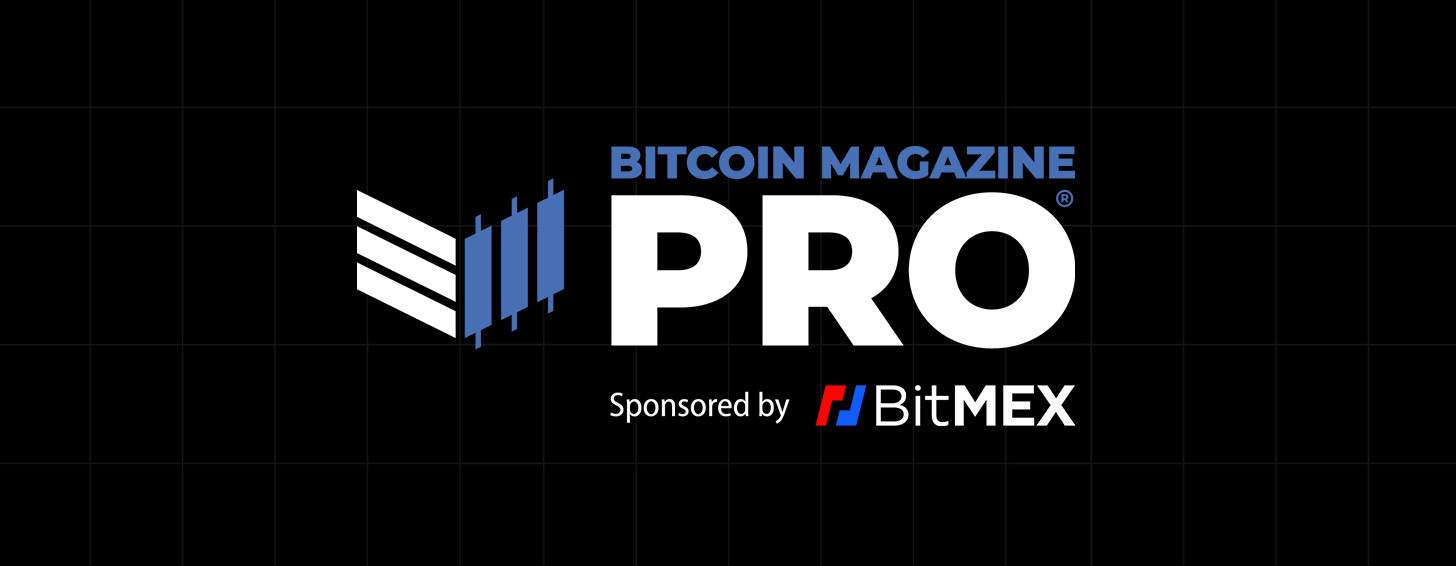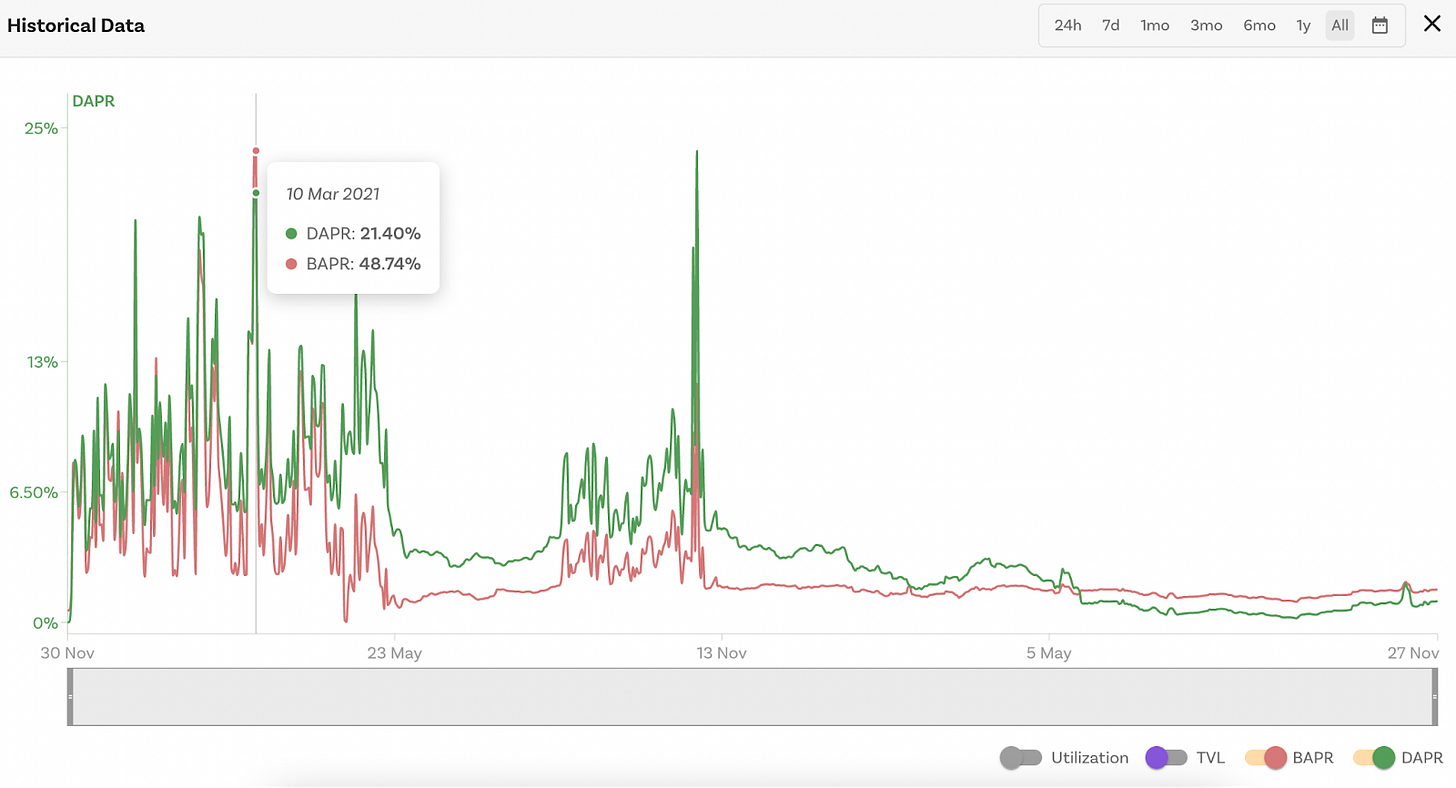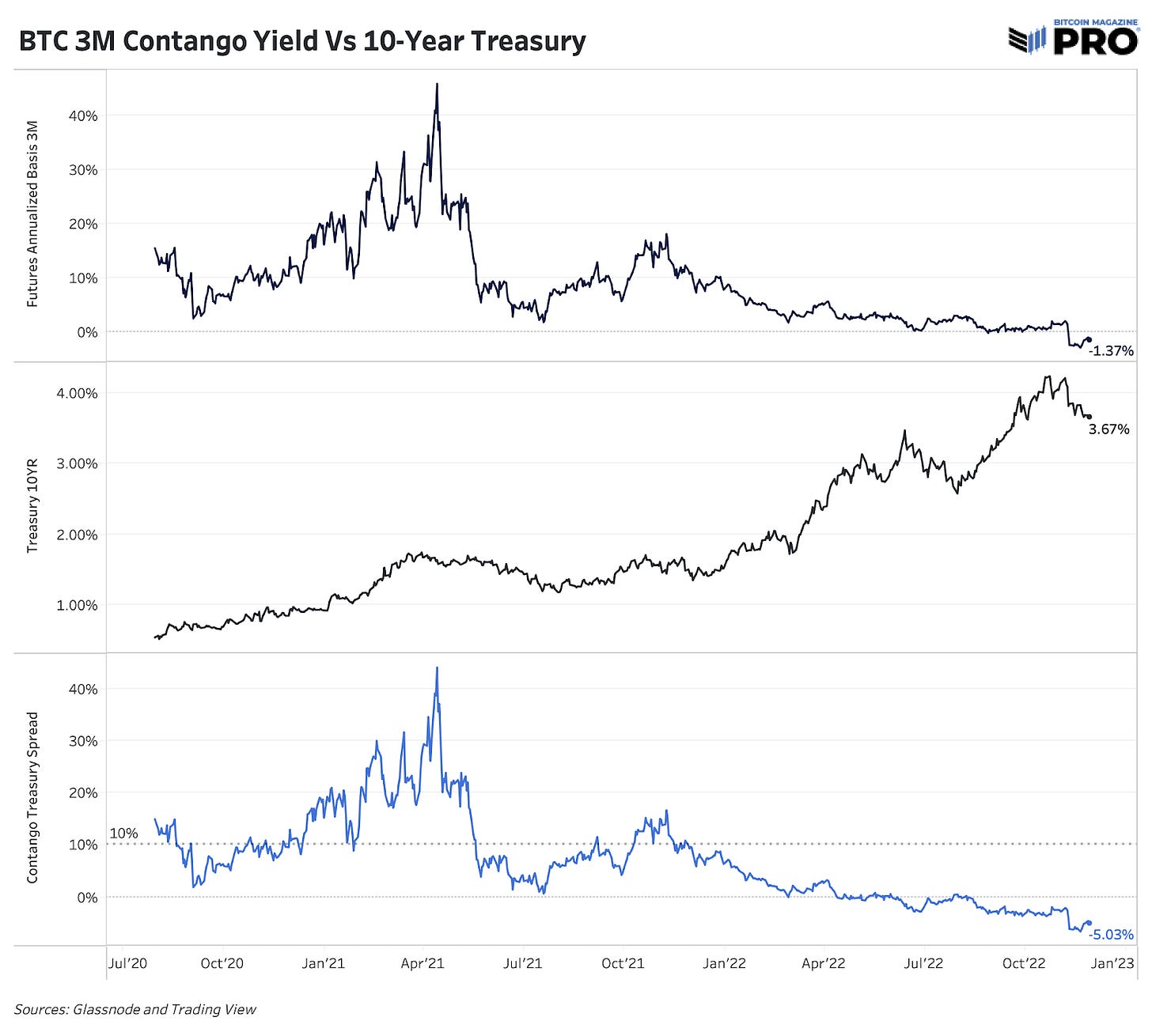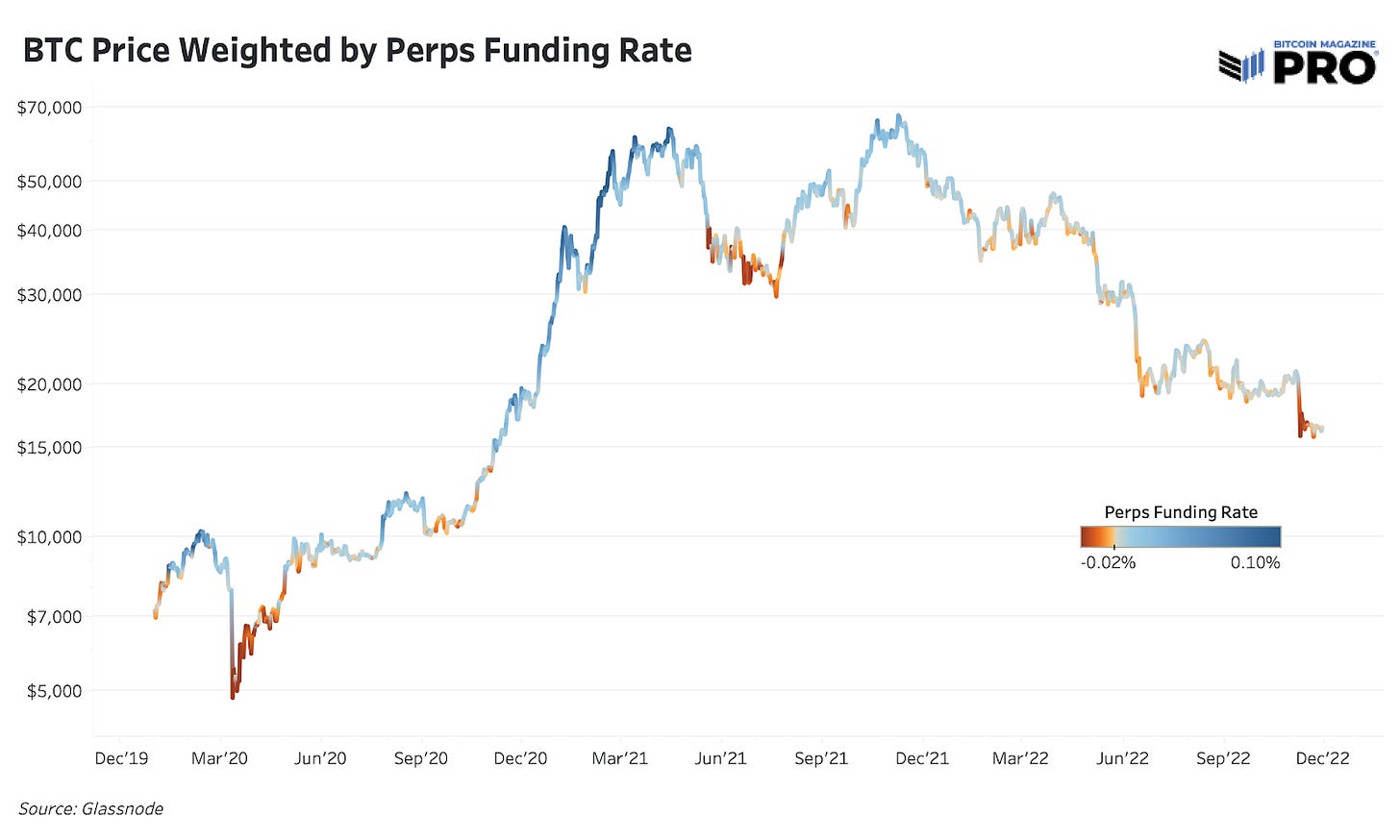Collapsing Crypto Yield Offerings Signal ‘Extreme Duress’
The leverage mania in crypto is over, and yield-generating arbitrage opportunities have collapsed. Readers should carefully evaluate how companies can still offer yield products above risk-free rates.
Relevant Past Articles:
The Exchange War: Binance Smells Blood As FTX/Alameda Rumors Mount
The Crypto Contagion Intensifies: Who Else Is Swimming Naked?
The Contagion Continues: Major Crypto Lender Genesis Is Next On The Chopping Block
Speculation And Yields
This cycle has been supercharged by speculation and yield, leading all the way back to the initial Grayscale Bitcoin Trust premium arbitrage opportunity. That opportunity in the market incentivized hedge funds and trading shops from all over the world to lever up in order to capture the premium spread. It was a ripe time for making money, especially back in early 2021 before the trade collapsed and switched to the significant discount we see today.
At the same time, we saw contango yields (the spread between the futures price and spot price) blow out during that period. In a market environment where the 10-year Treasury yield was hovering below 1%, it was an attractive play for new market participants to come in and capture the spread rather than park money in traditional markets. Everyone was going further out on the risk curve. Yet, this led to the market price being heavily influenced by the futures price and less influenced by spot buying that would eventually have to wind down.
We’re in a much different world now where the futures basis is in backwardation (futures below the spot price) and the 10-year Treasury is well over 3% with certain bonds and short-term bills acting as a much more attractive place to park cash for yields. Why chase bitcoin- and crypto-native “yields” when they are below market rates?
The same story existed in the perpetual futures market where we saw 7-day average annualized funding rates reach up to 120% at peak. This is the implied annual yield that long positions were paying in the market to short positions. There were an abundance of opportunities in the GBTC and futures markets alone for yield and quick returns to be had — without even mentioning the bucket of DeFi, staking tokens, failed projects and Ponzi schemes that were generating even higher yield opportunities in 2020 and 2021.
Upcoming Twitter Spaces: Bitcoin Magazine PRO is hosting special guest American HODL Thursday, Nov 30 at 4:00 pm ET. Click below to set your reminder and RSVP so you don’t miss out.
In case you missed it: Bitcoin Magazine PRO hosted Jeff Booth for a discussion on hyperbitcoinization, Jeff’s work with Ego Death Capital, and what investing in a Bitcoin-denominated world might look like.
Data from some of the DeFi protocols emphasize just how much excess demand for borrowing there was back in March 2021. Shown below are borrow and deposit rates for both USDC and yearn.finance (YFI) reaching annual borrow rates of 48.74% and 159.15% at peak.
USDC on AAVE borrow and deposit rates back in March 2021
Source: Yield Samurai
YFI on AAVE borrow and deposit rates back in March 2021
Source: Yield Samurai
Interview appearance: Bitcoin Magazine PRO Head of Market Research Dylan LeClair appeared on Fox Business to talk with host Charles Payne to discuss BlockFi filing for bankruptcy and the state of “yield products” in the crypto space.
There’s an ongoing, vicious feedback loop where higher prices drive more speculation and leverage, which, in turn, drive higher yields. Now, we’re dealing with this cycle in reverse. Lower prices wipe out more speculation and leverage while washing out any “yield” opportunities. As a result, yields everywhere have collapsed.
Similarly, much of the leverage fueled by high financing rates was plunged back into the crypto ecosystem, inflating collateral values across the board. When looking at the breakdown of collateral types in the bitcoin ecosystem, it’s particularly noticeable — with a mere 36% of collateral in bitcoin futures markets being bitcoin/crypto, compared to a whopping 70% at the top (with the remaining collateral being stablecoins/dollars).
Similarly, “total-value locked” in the Ethereum DeFi ecosystem surpassed over $100 billion in 2021 during the speculative mania, and is now a mere $23.9 billion today. This leverage-fueled mania in the crypto ecosystem fueled the growth of the “yield” products offered by the market, most of which have all collapsed now that the figurative tide has drawn out.
This dynamic brought about the rise of bitcoin and cryptocurrency yield-generating products, from Celsius to BlockFi to FTX and many more. Funds and traders capture a juicy spread while kicking back some of those profits to the retail users who keep their coins on exchanges to get a small amount of interest and yield. Retail users know little about where the yield comes from or the risks involved. Now, all of those short-term opportunities in the market seem to have evaporated.
With all of the speculative trades and yield gone, how can companies still offer such high-yielding rates that are well above traditional “risk-free” rates in the market? Where does the yield come from? Not to single out or FUD any specific companies, but take Nexo for example. Rates for USDC and USDT are still at 10% versus 1% on other DeFi platforms. The same goes for bitcoin and ether rates, 5% and 6% respectively, while other rates are largely nonexistent elsewhere.
Nexo looks to generate these high yields from their fairly high borrowing rates, around 13.9%. Higher yields for lenders are also generated from using the Nexo token, a loyalty and rewards program token similar to tokens we’ve seen from the likes of Celsius, Voyager and FTX. Users are incentivized to take yield rewards in the Nexo token while 82.63% of Nexo token supply is held by Nexo-controlled wallets.
These high borrow rates are collateralized with bitcoin and ethereum offering a 50% LTV (loan-to-value ratio) while a number of other speculative tokens can be used as collateral as well at a much lower LTV. Nexo shared a detailed thread on their business operations and model yesterday. As we’ve found out time and time again, we can never know for sure which institutions to trust or not to trust as this industry de-leveraging continues. However, the main questions to ask are:
Will a 13.9% loan demand be a sustainable business model going forward into this bear market? Won’t rates have to come down further?
Regardless of Nexo’s risk management practices, are there heightened counterparty risks currently for holding customer balances on numerous exchanges and DeFi protocols?


Below are Nexo LTV ratios:
Here is what we know:
The crypto-native credit impulse — a metric that is not perfectly quantifiable but imperfectly observable via a variety of datasets and market metrics — has plunged from its 2021 euphoric highs and now looks to be extremely negative. This means that any remaining product that is offering you crypto-native “yield” is likely to be under extreme duress, as the arbitrage strategies that fueled the explosion in yield products throughout the bull market cycle have all disappeared. On a larger level, one could very easily make the point that these arbitrage/yield strategies that emerged were a product of the ZIRP/QE (zero interest-rate policy/quantitative easing) era, and given the monetary tightening that has taken place, the speculative house of cards has collapsed.
What remains, and what will emerge from the depths of this bear market will be the assets/projects built on the strongest of foundations. In our view, there is bitcoin, and there is everything else.
Readers should evaluate counterparty risk in all forms, and stay away from any of the remaining yield products that exist in the market.
Thank you for reading Bitcoin Magazine Pro, we sincerely appreciate your support! Please consider leaving a like and letting us know your thoughts in the comments section. As well, sharing goes a long way toward helping us reach a wider audience!


















